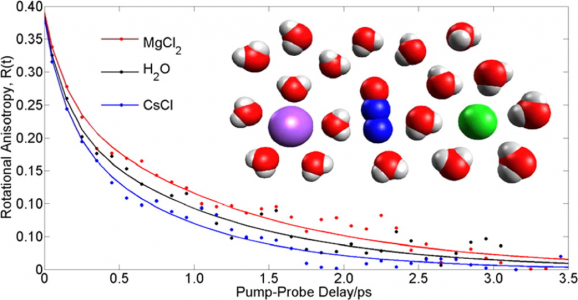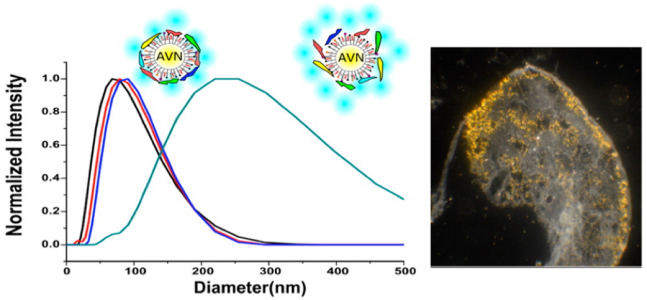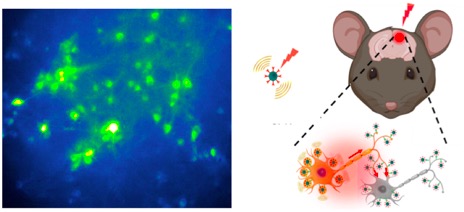Larry Ziegler: Surface-Enhanced Raman Scattering (SERS) Detection of Pathogens, Cancer and Human Body fluids
- Larry Ziegler
- Our group has several projects in a research area focused on the continued development of an optical analytical approach for rapid diagnostics of human diseases and the identification of human body fluids for forensics that are well-suited for an REU student. A novel gold or silver nanoparticle substrate has been developed which allows the observation of surface enhanced Raman scatering (SERS) spectra down to the single cell level, in about 10 seconds of data acquisition time using just milliwatts of incident laser power. The unique vibrational fingerprints obtained by this laser scattering phenomenon allow numerical algorithms to be used for diagnostics and results in a methodology that is much faster than currently employed cell growth culturing or PCR based methods. This techniques has applications for disease diagnostics such as bacteremia, UTI, cancer, STDs and in the field of forensic science. Working with a senior graduate student, the REU student will learn how to use this light scattering technique, analyze data and help further new applications of this methodlogy for impactful clinical and forensic applications.
-

Björn Reinhard: Development of Functional Nanoparticles for Biosensing and Imaging
- Björn Reinhard
- Research in the Reinhard Lab focuses on new optical materials and their application to interrogate fundamental life processes. We are exploring the interface between nanotechnology and biological systems. We are particularly interested in how artificial nanoscale system can be used to monitor and control cellular processes. We are using electromagnetic interactions between noble metal nanoparticles to elucidate how the spatial organization of cell surface receptors influences cancer-relevant signaling processes. Furthermore, we are building multifunctional nanoparticles that can selectively target specific cell types.
-

Xi Ling: Chemical sensing using two-dimensional materials enhanced Raman spectroscopy
- Xi Ling
- Raman spectroscopy is a materials characterization and molecular detection technique with the advantages of being fast, convenient and nondestructive. More importantly, rich structural information obtained from the Raman spectra offers the fingerprint of molecular species. Therefore, it has promising potential in highly sensitive analysis. However, the Raman signals are usually very weak and not suitable for micro or trace amount detection. Developing Raman enhancement techniques is widely studied to address the issue. Among all the techniques, surfaced enhanced Raman scattering (SERS) is intensively studied using the nanostructures of Nobel metals (e.g. Au, Ag and Cu) as substrates where strong enhancement allowing single molecule detection has been demonstrated. However, there are still some challenges to overcome in terms of the stability of the substrate and quantifiability of the signals. The Ling group is interested in using and engineering atomically thin two-dimensional (2D) materials (e.g. Gaphene and transition metal dichalcogendes) to realize a superior SERS system to satisfy the needs for trace amount detection, such as high sensitivity, high selectivity and reproducibility. The REU student will learn the techniques to synthesize 2D materials and the materials characterization methods, especially the spectroscopic characterization methods such as Raman and photoluminescence. The success of this project will promote the fast and effective detection of micro or trace chemicals for food safety, biological monitoring, environment protection and disease diagnosis.
-

Chen Yang: Developing nanomaterials for neuron modulation
- Chen Yang
- We are interested in developing nano-neuron interface, with a focus on achieving active neuron modulation through neuron stimulation and gene transfection. Such neuron modulation with a single neuron precision and non-invasive potential will enable innovative technologies to understand brain functions, to treat neural diseases and to program new brain plasticity. In this project we specially aim at synthesizing and functionalizing nanoparticles, studying their functions in stimulation and gene delivery for neurons in vitro, and demonstrating their effects in animal models.
-




